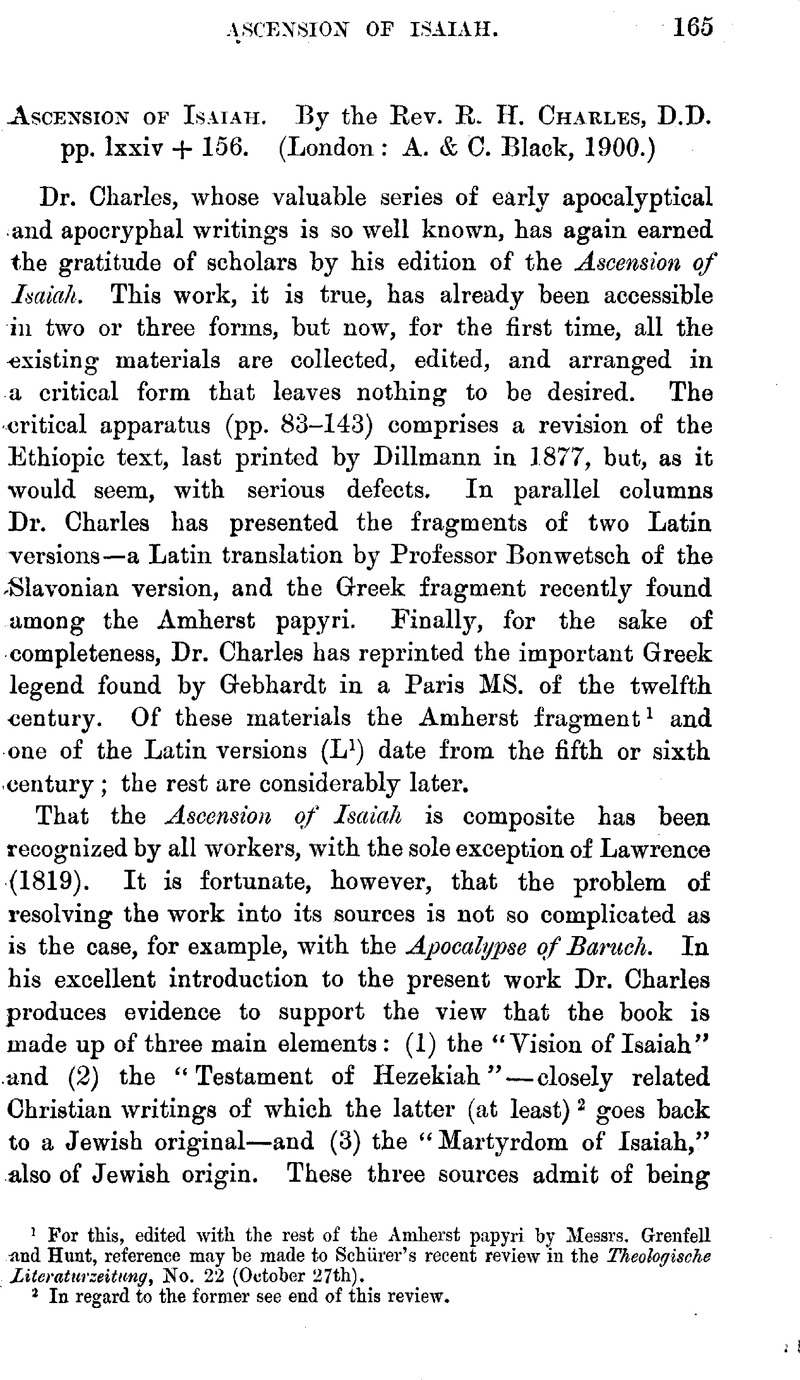No CrossRef data available.
Published online by Cambridge University Press: 15 March 2011

page 165 note 1 For this, edited with the rest of the Amherst papyri by MessrsGrenfell, and Hunt, , reference may be made to Schürer's recent review in the Theologische Literaturzeiting, No. 22 (10 27th)Google Scholar.
page 165 note 2 In regard to the former see end of this review.
page 166 note 1 Palestine Pilgrim's Text Society, vol. i, p. 530 sq.
page 166 note 2 Cf. in the Greek Legend, iii, 14 (ν πρίωνι σιδηρῳ), with r. 19, etc. (πρίωνι ξυλίνῳ)
page 167 note 1 As in the cases of Amâdâ (v. 12, for ![]() ) and Tâzôn (iii, 2, for
) and Tâzôn (iii, 2, for ![]() ), the corruption has probably taken place in the Greek.
), the corruption has probably taken place in the Greek.
page 168 note 1 Thus, the fact that the scene is laid near Bethlehem (ii, 12a; iii, 1) suggests that the Latin efrem stands for ‘Rephaim’ (Josh., xv, 8, etc.), and that ‘Joel’ (![]() ?) is a variant representing ‘Jeruel’ (
?) is a variant representing ‘Jeruel’ (![]() ; 2 Chron., xx, 16). On the other hand, in view of the hostility with which Samaria is regarded in the context, one might have expected Ebal or Gerizim; one may perhaps conjecture that ‘Joel’ is a corruption of the former and ‘Efrem’ of the latter (
; 2 Chron., xx, 16). On the other hand, in view of the hostility with which Samaria is regarded in the context, one might have expected Ebal or Gerizim; one may perhaps conjecture that ‘Joel’ is a corruption of the former and ‘Efrem’ of the latter (![]() in the first instance misread as
in the first instance misread as ![]() ). The existence of two so dissimilar variants may then, perhaps, become more explicable.
). The existence of two so dissimilar variants may then, perhaps, become more explicable.
page 168 note 2 It is possible that the name has been introduced into ii, 4, from v, 3, which (ex hyp.) may be already corrupt—for ‘the princes’ (cf. v, 12)?—or may it go back to a transliteration of a Greek original, μετ … ?
page 168 note 1 ‘Boundaries [Gr. and Lat. ‘mountains’] of the Medes.’
page 169 note 1 Cf. 1 Sam., x, 6, and frequently. It is interesting to observe that there is a very similar corruption in 1 Esdras, i, 11, where μετ'εὐωδίας corresponds to ![]() (‘and in pans’) in the parallel passage, 2 Chron., xxxiv, 13; καί εὐοδώθη, the reading of the Septuagint, is due to a very plausible misunderstanding.
(‘and in pans’) in the parallel passage, 2 Chron., xxxiv, 13; καί εὐοδώθη, the reading of the Septuagint, is due to a very plausible misunderstanding.